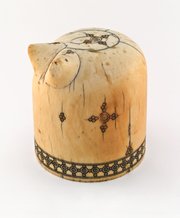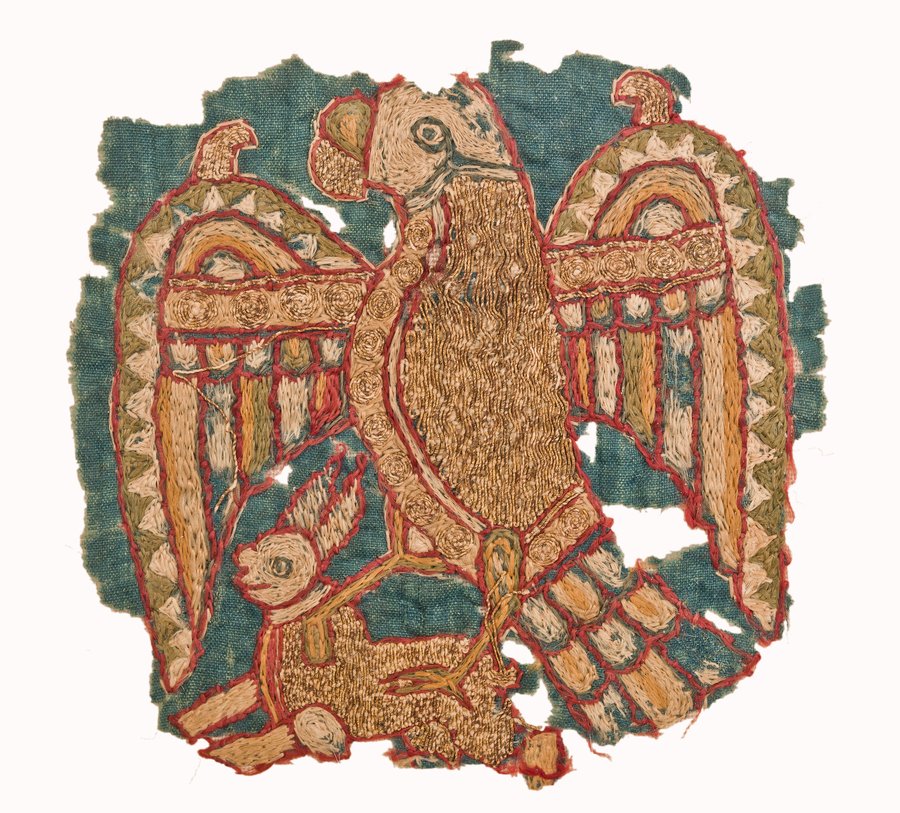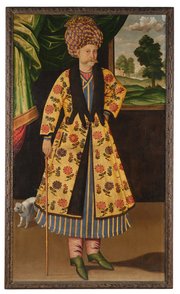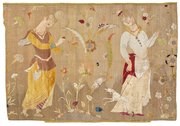
Silk Textile from Saint Lazare's shroud
Museum of Islamic Art
- Title:
- Silk Textile from Saint Lazare's shroud
- Production place:
- Almeria
- Date:
- 1007 - 1008
- Period:
- Umayyad of al-Andalus
- Title:
- Silk Textile from Saint Lazare's shroud
- Production place:
- Almeria
- Date:
- 1007 - 1008
- Period:
- Umayyad of al-Andalus
- Material:
- Silk, Metallic thread
- Technique:
- Weaving, Embroidering
- Dimensions:
- 7 × 7.5
This embroidered silk fragment, of which three other known fragments exist, forms part of a larger famous shroud used to wrap the relics of Saint Lazarus, placed in the tomb of the Church of Saint-Nazaire, in Autun, France, in 542 AH/1147 CE. The completed shroud was originally woven with rows of large hexalobed medallions containing horsemen, sphinxes, and cheetah, interspersed by smaller, star-shaped medallions containing a heraldic eagle attaching a hare, like this fragment. These themes form part of a princely or courtly repertoire used to transmit the idea of power and strength. Due to the discovery of the word ‘al-Muzaffar’ (‘the Victorious’) on the belt of one of the falconers, this textile is believed to have been made for the second Umayyad ruler of Al-Andalus, Abd al-Malik (r. 392-399 AH/1002-08 CE), a title given to him after his victory over the Castillian count, Sancho Garcia, in Clunia in 397 AH/1007 CE. Three other inscriptions appear on belts and a shield, which further confirm the textile's victorious commission.



